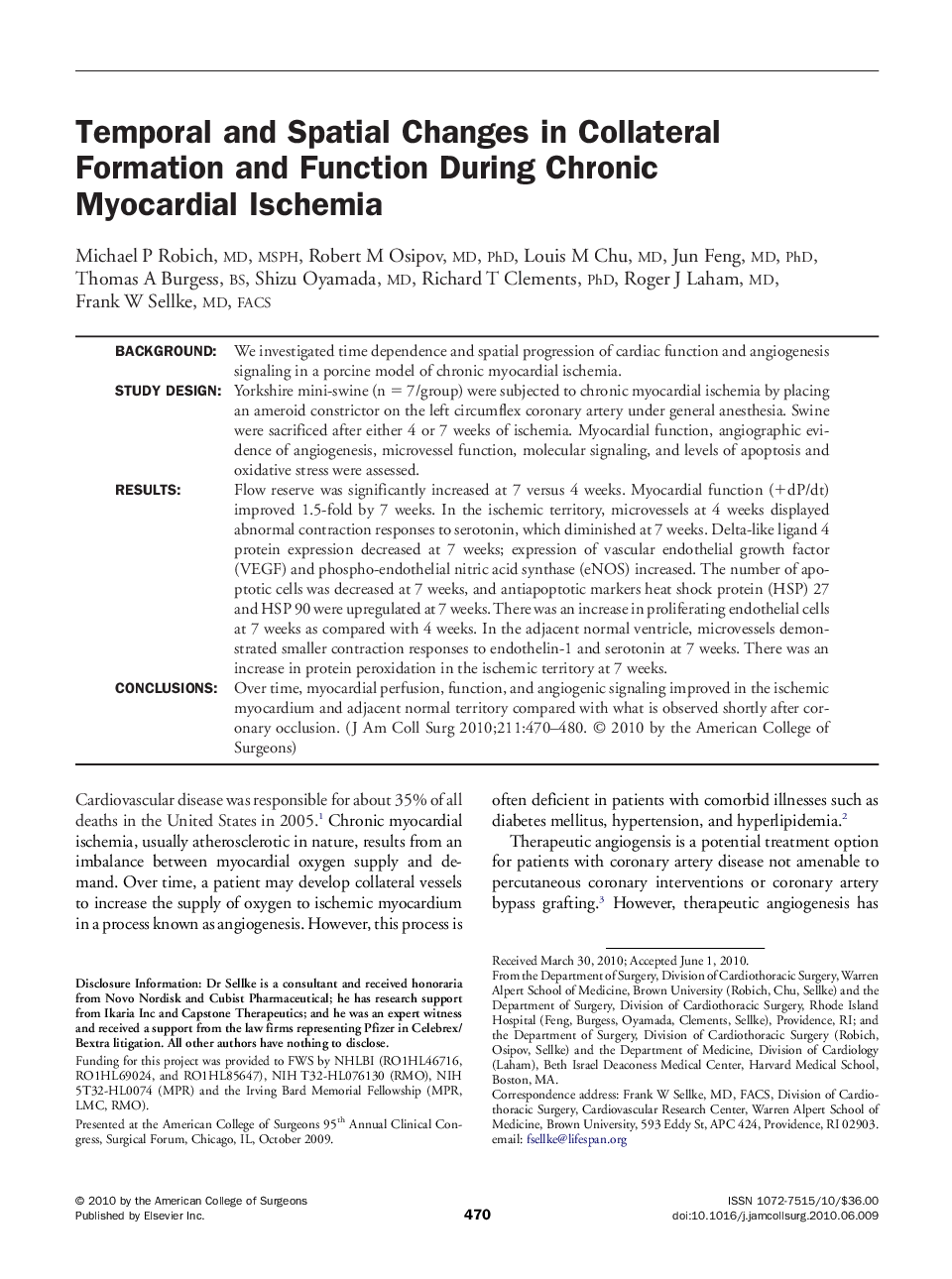| Article ID | Journal | Published Year | Pages | File Type |
|---|---|---|---|---|
| 4293722 | Journal of the American College of Surgeons | 2010 | 11 Pages |
BackgroundWe investigated time dependence and spatial progression of cardiac function and angiogenesis signaling in a porcine model of chronic myocardial ischemia.Study DesignYorkshire mini-swine (n = 7/group) were subjected to chronic myocardial ischemia by placing an ameroid constrictor on the left circumflex coronary artery under general anesthesia. Swine were sacrificed after either 4 or 7 weeks of ischemia. Myocardial function, angiographic evidence of angiogenesis, microvessel function, molecular signaling, and levels of apoptosis and oxidative stress were assessed.ResultsFlow reserve was significantly increased at 7 versus 4 weeks. Myocardial function (+dP/dt) improved 1.5-fold by 7 weeks. In the ischemic territory, microvessels at 4 weeks displayed abnormal contraction responses to serotonin, which diminished at 7 weeks. Delta-like ligand 4 protein expression decreased at 7 weeks; expression of vascular endothelial growth factor (VEGF) and phospho-endothelial nitric acid synthase (eNOS) increased. The number of apoptotic cells was decreased at 7 weeks, and antiapoptotic markers heat shock protein (HSP) 27 and HSP 90 were upregulated at 7 weeks. There was an increase in proliferating endothelial cells at 7 weeks as compared with 4 weeks. In the adjacent normal ventricle, microvessels demonstrated smaller contraction responses to endothelin-1 and serotonin at 7 weeks. There was an increase in protein peroxidation in the ischemic territory at 7 weeks.ConclusionsOver time, myocardial perfusion, function, and angiogenic signaling improved in the ischemic myocardium and adjacent normal territory compared with what is observed shortly after coronary occlusion.
